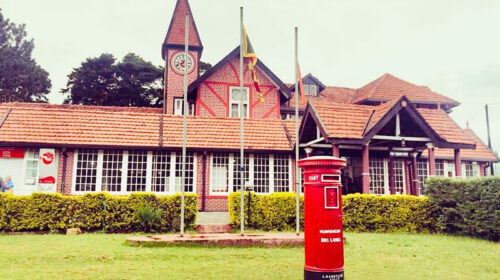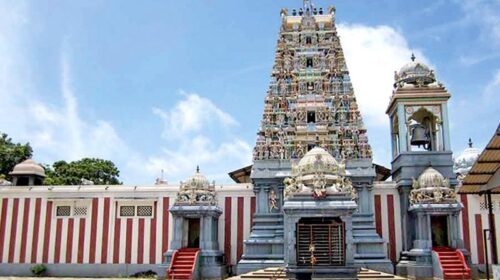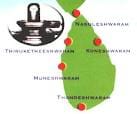- Home
- Travel, Arts & Literature
Ex-Tourism Chief recommends preserving historic Nuwara Eliya Post Office
 Former Sri Lanka Tourism Chairperson Kimarli Fernando suggested yesterday to consider switching the President’s Nuwara Eliya residence into a hotel as an option if demand arises for additional accommodation.
Former Sri Lanka Tourism Chairperson Kimarli Fernando suggested yesterday to consider switching the President’s Nuwara Eliya residence into a hotel as an option if demand arises for additional accommodation.
She voiced her concerns over the Government’s decision to convert the historic Nuwara Eliya Post Office into a hotel, acknowledging the ‘excess’ room capacity in upcountry city.
“Nuwara Eliya currently has excess room capacity. Should there be a need for more rooms, converting the President’s Nuwara Eliya house, to a hotel, could be considered in the future, if needed,” she said via her Facebook account.
On Monday the Cabinet of Ministers approved a proposal presented by President Ranil Wickremesinghe in his capacity as the Investment Promotion Minister to convert Nuwara Eliya Post Office into a hotel.
“Taj Group has proposed converting the Nuwara Eliya Colonial-era Post Office into a hotel. The proposal came to the Presidential Secretariat and the specifics will be made available by the Secretariat once the project gets off the ground,” Cabinet Co-Spokesman and Minister Bandula Gunawardana confirmed at the post-Cabinet meeting media briefing on Tuesday.
Fernando said the Post Office in Nuwara Eliya, the Tudor-style two-storey red-brick building with a clock spire, was constructed in 1894 by the British. Sri Lanka Post has been in existence for more than 209 years, with a proud history and heritage.
“It should remain as a working Post Office. If management needs to be shared to uplift, where income is shared, a unique memorabilia museum, store or tea boutique could be considered, to generate income,” she noted.
Tourist arrivals top 100,000 in March marking historic hat-trick post-2019
- First 26 days of March draw 105,714 tourists, pushing Q1 arrivals to 315,898
- Russia leads as top market with 22,038, followed by India, UK, Germany and US
- Tourism Minister Harin Fernando applauds industry stakeholders’ efforts for strong comeback in 2023
By Charumini de Silva
 With arrivals surpassing the 100,000 mark in the first 26 days of March, Sri Lanka’s tourism industry has welcomed over 300,000 visitors in the first quarter, starting 2023 on a positive note.
With arrivals surpassing the 100,000 mark in the first 26 days of March, Sri Lanka’s tourism industry has welcomed over 300,000 visitors in the first quarter, starting 2023 on a positive note.
This is also the first time Sri Lanka’s tourism industry recorded over 100,000 tourist arrivals in three consecutive months after 2019.
Led by Russian travellers, during the first 26 days of March, a total of 105,714 tourists arrived in the country, propelling the cumulative figure to 315,898 continuing the growth momentum and boosting hopes for a good year. The growth in the first quarter (with a few days remaining) of tourist arrival is over 10.7% compared to the same period last year, but still 55% lower than the first quarter of the benchmark year 2018.
Russia leads as the top source market, reflecting 21% or 22,038 of total arrivals during the first 26 days of March followed by India with 15% or 15,695, the United Kingdom with 8% or 8,555, Germany with 8% or 8,256, and the US with 5%, provisional data released by the Sri Lanka Tourism Development Authority yesterday noted.
“Sri Lanka’s tourism industry has made a strong comeback in 2023 after a series of major setbacks from 2019. The respect and tribute of it should go to all stakeholders of the industry for all their dynamic and steadfast commitment to overcoming the challenges. I salute their dedication and efforts,” Tourism Minister Harin Fernando told the Daily FT.
He also said that the National Tourism Policy blueprint will also be implemented soon to set out consistent policies and standards to boost Sri Lanka’s tourism industry to its next stage of growth in 2024.
“We are excited about 2023, as plans are underway to make Sri Lanka a year-round destination,” the Minister added.
Tourism accounts for close to 5% of Sri Lanka’s economy. The industry is hopeful of achieving 1.55 million visitors and an income of $ 2.88 billion in 2023.
With Sri Lanka Tourism not opting for a global communication blitz in 2023, however, it will focus on nine key markets identified as India, Russia, China, the UK, France, Germany, the Middle East, and Nordic countries. The MICE tourism segment is earmarked as a key segment Sri Lanka looks to explore this year to push the numbers and earnings.
Analysis opined that the continuous positive publicity at the global level was also a major factor for the boost in arrivals post-political instability just last year.
The island is preparing new packages such as the Murugan-Shiva Shakthi trails
The Hindu
T. Ramakrishnanan
 Sri Lanka’s tourism officials, conscious of the dire need to shore up their country’s economy, plan to woo a greater number of Indian tourists, who constitute the single largest segment of foreign tourists, through new packages such as the Murugan-Shiva Shakthi trails. Their optimism stems from the fact that there is a proposal to resume air passenger services from the Palaly airport in Jaffna to destinations in the southern part of India.
Sri Lanka’s tourism officials, conscious of the dire need to shore up their country’s economy, plan to woo a greater number of Indian tourists, who constitute the single largest segment of foreign tourists, through new packages such as the Murugan-Shiva Shakthi trails. Their optimism stems from the fact that there is a proposal to resume air passenger services from the Palaly airport in Jaffna to destinations in the southern part of India.
As part of the Murugan trail, two important places — Nallur Kandaswamy or Murugan temple in Jaffna of the Northern Province, and Kataragama of the Uva Province in the southeast — have been included.
Referring to the ongoing 25-day-long festival in Nallur (which concludes on August 27), Chalaka Gajabahu, chairman of the Sri Lanka Tourism Promotion Bureau, told a group of journalists from India recently in Colombo that the festival was expected to draw over a million devotees, including 1,00,000 from the diaspora. A “special calendar” of events was being prepared for Hindu devotees.
Promoting the North
To a query whether the Northern Province would be a regular feature in the packages for tourists, Mr. Gajabahu replied in the affirmative and asserted “we have been actively promoting the North on trade FAMs [familiarisation trips].” The East too would receive more focus in view of its diverse cultural significance that encompassed Islam. However, he conceded that marketing of the North had not been done “much.”
Nagabhooshani Amman temple, Nainativu, Northern Province, Sri Lanka.
 The question was raised in the context of coverage of Naguleeswaram in Jaffna and Thiruketheeswaram in Mannar, both coming under five abodes of Lord Shiva in Sri Lanka, in the new Murugan trail. The other three abodes included Thirukoneeswaram temple, Trincomalee, in the Eastern Province, Munneeswaram temple in the north-west and Tondeeshwaram temple, near Matara, in the south. The trail would also include shrines such as Nagapooshani Amman temple and Nagadeepa Purana Vihara, both in Nainativu, off Jaffna.
The question was raised in the context of coverage of Naguleeswaram in Jaffna and Thiruketheeswaram in Mannar, both coming under five abodes of Lord Shiva in Sri Lanka, in the new Murugan trail. The other three abodes included Thirukoneeswaram temple, Trincomalee, in the Eastern Province, Munneeswaram temple in the north-west and Tondeeshwaram temple, near Matara, in the south. The trail would also include shrines such as Nagapooshani Amman temple and Nagadeepa Purana Vihara, both in Nainativu, off Jaffna.
Ramayana trail
Pointing out that a Ramayana trail had been in place for many years, the Bureau chief called for modification in the programme to accommodate a greater number of youth.
Even as Indian tourists formed the biggest chunk of foreign tourists, Mr. Gajabahu emphasised that various steps were being taken to attract them more. Adventure tourism, entertainment and gambling were some of the attractions being offered by Sri Lanka. His team had planned to visit Indian cities in September such as Mumbai and New Delhi for the purpose of promotion.
On the overall target for foreign tourists, the Bureau chief said they hope to attract 8.5 lakh to 10 lakh tourists (1 million) this year. However, the aim was to get back to the 2018 tally of 2.1 million, as the tourism sector had been hit badly following the 2019 Easter Sunday attacks and the COVID-19 pandemic. “For the next six months to one year, we want to create a positive picture about Sri Lanka. Refreshening, positioning and taking it forward will be our functions,” Mr. Gajabahu observed, adding that till July, about 4.5 lakh foreign tourists had arrived this year.
Welcoming the tourism authorities’ initiative, Selvaretnam Raghavan, president of the Thiruketheeswaram Temple Restoration Society, says the new trail will bring in more devotees to the temple too, which was consecrated on July 6. He adds that the temple, which was damaged during the civil war, was renovated at a total cost of LKR 900 million which included LKR 320 million from the Indian government.